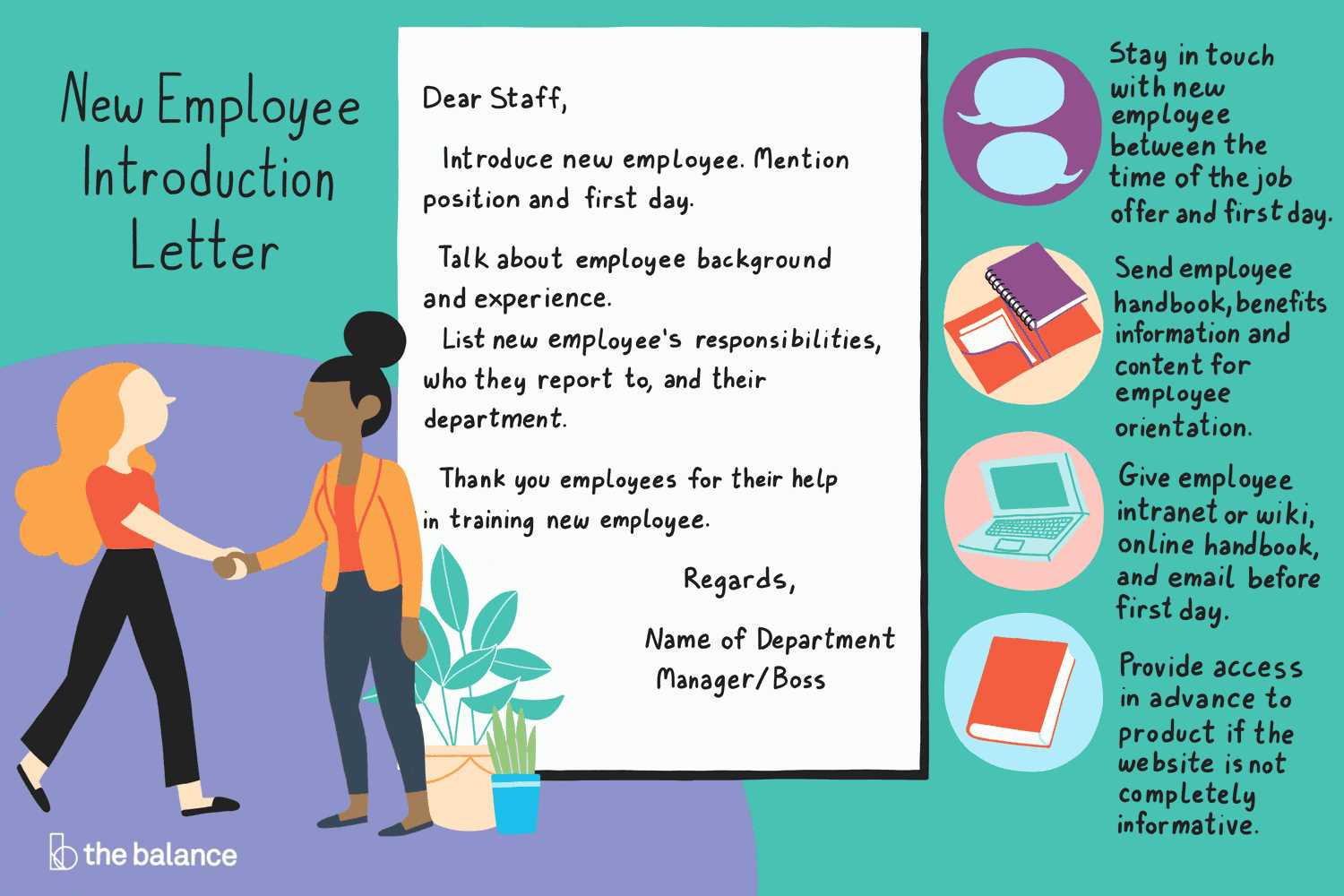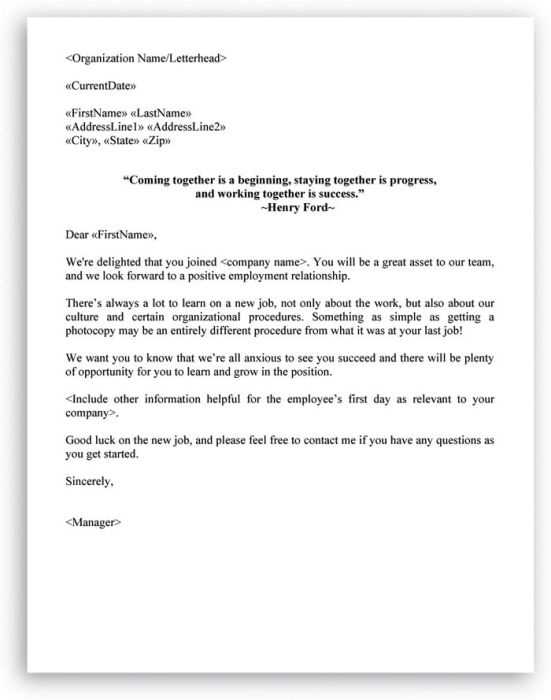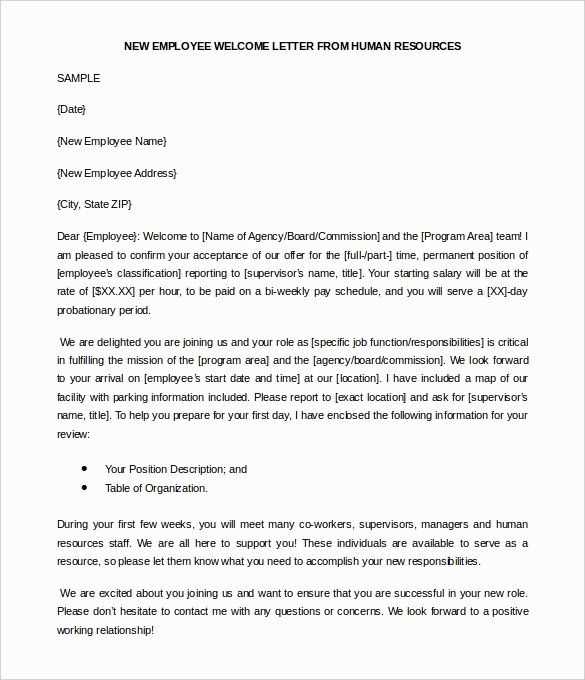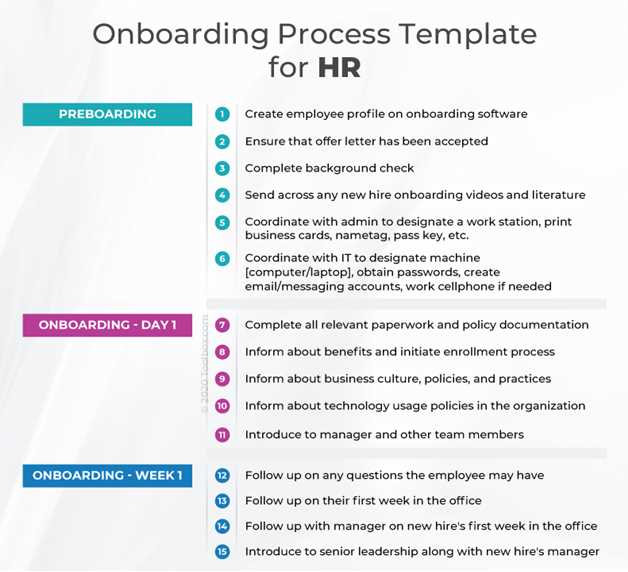Onboarding letter template

Make your new hires feel welcomed right from the start with a clear and engaging onboarding letter. This letter sets the tone for their experience, offering the right balance of professionalism and warmth. Highlight key details such as their role, expectations, and any necessary next steps to help them settle in smoothly. A well-crafted letter can boost excitement and reduce the uncertainty often felt during the first days at a new job.
Start with a brief greeting, followed by the specifics of their role and responsibilities. Keep the language direct and friendly–avoid overly formal expressions. Let them know you’re excited to have them join the team and highlight how their skills align with your company’s goals. Make sure to provide all the necessary information, such as their start date, first-day schedule, and who to contact for any immediate questions.
Wrap up with an invitation to ask questions and express enthusiasm about their first day. A welcoming message makes a big difference in helping new hires feel at ease. Keep it concise but meaningful, ensuring they know exactly what to expect in the coming days. Personalize the letter where possible, addressing them by name and using a tone that fits your company’s culture.
Here’s the corrected version:
Address the new hire directly and confirm their start date. Make sure to mention the specific time and location (or virtual meeting details) to avoid any confusion. This sets clear expectations for their first day.
Details for the First Day

Provide the new hire with the key tasks they’ll need to complete before their first day. This can include submitting documents, downloading necessary software, or reviewing a company handbook. A concise list with deadlines helps them stay organized.
- Complete any paperwork: Submit forms by [date]
- Download software: Links provided
- Read through the employee handbook
Introducing the Team
Include a brief introduction to key team members they will work with. If possible, provide links to their profiles or a short description of their roles. This makes the new hire feel more familiar with the team and the workplace culture.
End with a warm and welcoming sentence. Reaffirm that the company is excited about their arrival and let them know they can reach out with any questions or concerns.
Onboarding Letter Template
How to Start Your Letter: Key Information to Include
Best Practices for Setting Expectations in the Onboarding Process
Personalizing Your Letter for New Hires
How to Explain Company Policies Clearly in the Letter
How to Convey the First Day Schedule in the Letter
Common Mistakes to Avoid When Writing the Onboarding Letter
Start your onboarding letter with a warm, welcoming tone. Include the job title, department, and start date. Mention the hiring manager’s name and contact details for any questions. It’s helpful to remind them of what the role involves and express excitement about their first day.
Setting Expectations in the Onboarding Process

Clearly outline what the new hire can expect during the first few days. This can include meetings with team members, introductions to key company systems, or training sessions. Let them know who to approach for help, what tools or platforms they’ll need access to, and any initial tasks that need to be completed.
Personalizing Your Letter for New Hires

Address the new hire by name and refer to specific qualities that made them a great fit for the position. Mention the team or department they’ll be joining, and perhaps reference any conversations you had during the interview process. Tailor the letter to reflect your company culture, showing them they’re joining an environment that values their unique contributions.
Be clear and concise when explaining company policies. Avoid jargon or overly detailed descriptions. Focus on important points like work hours, dress code, and any remote work guidelines. Mention any documentation they need to review or sign before starting.
Provide a straightforward schedule for the first day. Include the time they should arrive, where they’ll need to go, and the sequence of events (such as an office tour or introductory meetings). If applicable, mention any items they should bring with them, like identification or documents.
Avoid these common mistakes: being too vague, using formal or impersonal language, leaving out essential contact information, and overloading the letter with unnecessary details. Keep it simple and focused on the key points that will help the new hire settle in smoothly.